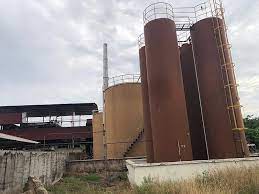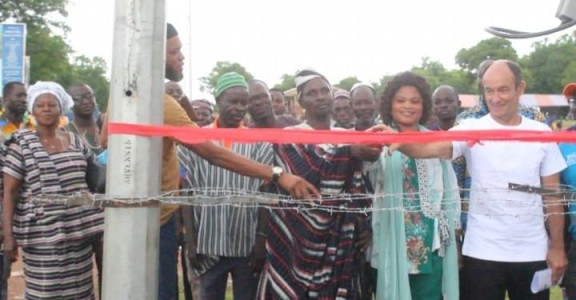$10m Buipe Sheanut Factory Left to Rot

It is emerging that the $10-million Buipe Sheanut Processing Factory commissioned in May 2012 by then vice President, John Dramani Mahama, has been left to rot.
The 40, 000 capacity factory, has been in this sorry state over two years, The Anchor has gathered.
Reports of the sheanut factory bring to mind, the Komenda Sugar Factory, which has also been rotting away, despite government promise to involve private investors.
The factory, established to add value to sheanut production in that part of the country for export, was first of three factories that were to be set up in the then Northern Region by the National Democratic Congress (NDC) government.
It was a joint venture between government through the Produce Buying Company (PBC) Ltd and Messrs LDS Maquinase’ EquimentosIndustias Limited of Brazil.
Per the agreement, Messrs Sysgate Brazil Limited, was mandated to market the sheabutter on the Brazilian market and was expected to provide jobs to thousands of the youth and women in particular.
The Buipe sheanuts processing factory, has a lifespan of 30-years with an annual capacity of 12,000 tons – to fetch an income of about $30 million. The factory, has ready markets for its produce in Brazil.
According to a youth Imam in Laribanga, Issifu Seidu Kudus Gbeadese, it was disturbing that the Akufo-Addo government, which campaigned on building a factory in each district, as part of its flagship One District One Factory (1D1F) policy, has turned a blind eye to this state asset.
In a write up sighted by this paper, the concerned youth Imam said; “Surprisingly, the Nana Akufo-Addo and Dr Bawumia’s NPP government which is trumpeting 1D1F as one of the prioritized programs, chose to leave the 40,000 capacity sheanut processing factory to rot away.
Reports from the factory indicate that it has either been grounded for the past two years or more, without any solution in sight. This has resulted to increase unemployment cases among the youth and the poor women have equally been rendered poorer and more vulnerable for middlemen to keep cheating them”.
He called on the government to see the factory as a priority and put it into good use.
“If the Akufo-Addo NPP government actually believes in their 1D1F slogan, the easiest way to fulfill this for the entire Savannah Region, is to revive the factory and even expand its capacity.
It is sad that we have the raw materials (sheanuts) in abundance but due to political interest and reckless decisions, a $10m, 40,000 capacity Buipe Sheanut processing factory has been left to rot while the unemployed youth wallow about without jobs”, he added.
At the commissioning ceremony, the then Vice President indicated that, the decision to set up the factory in Buipe was to add value to the Sheanut and use it as a means to create employment for the teeming youth, to improve income of the rural women who risk their lives in picking the shea nuts, to ensure a guaranteed price for them as well.
These poor women are mostly shortchanged by the middlemen who buy the nuts during the bumper harvest, export them unprocessed for cosmetics and moisturizers industries.
But Issifu Seidu Kudus Gbeadese said “Painfully, a 2004 USAID report has it that annually, about 48% of the Shea nuts in the Savannah belt remain uncollected and underutilized due to the lack of ready market and the risk involve. So, the setting up of the factory was to create the ready market to motivate these women to ensure the collection of more than 90% of the Shea nuts”.
He explained that, “The Savannah belt, which occupies about half of Ghana’s total landmass of 2,385,100 square kilometres, has the Shea tree as the major economic resource to especially the women. It is estimated that the annual potential production of sheanut in the belt is about 200,000 tonnes with about 45,000 tonnes of the Shea kernel exported annually. With these estimates, the sheanut factory was strategically sited to mop up the raw materials from the entire belt and ultimately eradicate the ever-rising poverty levels of rural women especially, within the Savannah belt.
It is trite knowledge that the Savannah belt is the poorest in Ghana. With concomitant needless ethnic conflicts across the region, unemployment, insecurity, hunger and illiteracy, the inequality gap between the South and the North keeps widening. So, to reduce and ultimately eradicate poverty and unemployment within Savannah Ecological Zone, it is imperative to adopt strategic economic policies and programs that will create employment and improve the income levels of the poor-vulnerable-women in rural North”.
source: anchorghana




